Angela Ackerman's Blog: Writers Helping Writers, page 164
July 8, 2013
An MFA in WRITING: Marissa Graff's Top 4 Lessons From Semester One
If you are a career writer, chances are at some point you've wondered if you should invest in a MFA (Masters of Fine Arts) for Writing. Marissa Graff is a Young Adult writer and good friend of mine who decided to take this plunge, and she with us today to share a few takeaways since entering the program. What I love about these are how they can be applied to anyone on the writing path, not just those who seek higher education. Please READ ON!
~ ~ * ~ ~

As writers, we wonder if an MFA program is a must-have on the road to publication. Having just finished my first semester at VCFA, I will say that it’s a decision that’s personal for each of us. There’s no doubt that the decision to pursue an MFA comes at many costs. While tons of writers reach publication without one, others feel like it’s the right investment for them. Whatever your feelings on an MFA program, the most important lessons I took away from my first semester at VCFA have nothing to do with earning a degree.
1. Keep an open-mind, but don’t shut out your inner voice. I went into my first semester with the attitude of letting the writing gods and my advisor lead me where they wanted. Though my advisor was fabulous, my release of total control was a sign that I had little faith in myself. I forgot to trust my own instincts. That’s not to say ignore the advice of other writers/critique partners because then there’s no point in inviting in outside opinions. But don’t forget to listen to your gut. Sometimes my advisor caught things that were unfeasible, poorly-hidden backstory, etc. and truthfully, they had been nibbling at my mind already. Just like in a critique group, it’s important to receive feedback, mull it over, and then go forward with what makes sense for you. An MFA program is like having a critique partner on steroids. Toss all that advice into a big colander and sift out what doesn’t resonate, while retaining all the tidbits that lead to aha moments. By the end of my first semester, I learned to differentiate between the two and it was perhaps the most important lesson for me.
2. Be a mad scientist. We rarely give ourselves permission to play. At my advisor’s suggestion, I explored short stories as my out-of-the-box writing experiment during my first semester. I dove into reading short story anthologies and reluctantly tried my hand at composing one. I loved the newness and brevity of the short story form and will continue to force myself to try new things. Whatever you’re afraid of or you think you don’t really know much about, challenge yourself to explore it. Poetry, short stories, non-fiction, or maybe just a different age-range, it’s amazing how sampling something different can improve our overall abilities.
3. Let go of your fears and go there. Sure, you can have an outline or a scene idea that you cling to like grim death, but tell your character’s story as honestly as he/she is begging you to do. I was afraid to touch the pain in my protagonist’s past until this semester. My advisor called me on it. I finally sat at the keyboard, closed my eyes, and went there. It was painful and scary and I was drained as though I’d channeled an otherworldly spirit when the scene was over. I was moved to tears and it felt like a big wound had been ripped open inside me. It was necessary. After months with this character, I finally knew her core and was able to view her world through her eyes, not mine. As writers, our brains are our own worst enemies. The only thing standing between you and your story is your inner editor over-thinking every scene, every action, every word. Don’t be afraid. Let go of your fears and just write. Editing will come later.
4. An MFA is not the only way to improve our craft. Don’t get me wrong. I adore my MFA program like it’s a fated soulmate. But my situation and ability to complete the program is unique to me. I don’t come from a creative writing background and I’m not one of those people who can say, “I’ve been writing stories since I was seven.” I never imagined stepping away from full-time work and taking this huge plunge. In fact, when I first heard about VCFA a few years ago, I distinctly remember thinking there was no way that would ever be me. So I educated myself. Everything I knew about writing prior to starting an MFA program came from reading. A lot. And writing. A lot. And critiquing. And conferencing. And of course, through the free wisdom writers share via the blogosphere. Good writing knowledge is out there.
Without the structure of an MFA program, it takes consistency and a lot of self-discipline to cobble together a do-it-yourself education, but it isn’t impossible. I’ve seen many writers do it and go on to nab an agent and get published. While I’ve learned many new hard skills during my first semester, the vast majority of what I know about writing came from years of self-study, craft books, and exploring the benefits of SCBWI. An MFA is a fabulous experience, but it isn’t a requirement.
YOUR TURN: What are your thoughts on MFA programs or other formal writing training versus self-study? If you have experience with a program, please weigh in on the discussion. If it’s something you’ve considered, we’d love to hear about it. Happy writing!

Marissa Graff is a full-time student at the Vermont College of Fine Arts MFA program in Writing for Children and Young Adults. When she’s not reading or writing, or thinking about reading and writing, she’s spending time with her husband, Crossfitting, or exploring Northern Virginia. Follow her on TWITTER & FACEBOOK for more on her MFA & Writing adventures!
The Vermont College of Fine Arts MFA in Writing for Children and Young
Adults is a low-residency program, meaning you attend lectures and
workshop for ten days in January and ten days in July, while working
one-on-one with an advisor during the months between.

~ ~ * ~ ~

As writers, we wonder if an MFA program is a must-have on the road to publication. Having just finished my first semester at VCFA, I will say that it’s a decision that’s personal for each of us. There’s no doubt that the decision to pursue an MFA comes at many costs. While tons of writers reach publication without one, others feel like it’s the right investment for them. Whatever your feelings on an MFA program, the most important lessons I took away from my first semester at VCFA have nothing to do with earning a degree.
1. Keep an open-mind, but don’t shut out your inner voice. I went into my first semester with the attitude of letting the writing gods and my advisor lead me where they wanted. Though my advisor was fabulous, my release of total control was a sign that I had little faith in myself. I forgot to trust my own instincts. That’s not to say ignore the advice of other writers/critique partners because then there’s no point in inviting in outside opinions. But don’t forget to listen to your gut. Sometimes my advisor caught things that were unfeasible, poorly-hidden backstory, etc. and truthfully, they had been nibbling at my mind already. Just like in a critique group, it’s important to receive feedback, mull it over, and then go forward with what makes sense for you. An MFA program is like having a critique partner on steroids. Toss all that advice into a big colander and sift out what doesn’t resonate, while retaining all the tidbits that lead to aha moments. By the end of my first semester, I learned to differentiate between the two and it was perhaps the most important lesson for me.
2. Be a mad scientist. We rarely give ourselves permission to play. At my advisor’s suggestion, I explored short stories as my out-of-the-box writing experiment during my first semester. I dove into reading short story anthologies and reluctantly tried my hand at composing one. I loved the newness and brevity of the short story form and will continue to force myself to try new things. Whatever you’re afraid of or you think you don’t really know much about, challenge yourself to explore it. Poetry, short stories, non-fiction, or maybe just a different age-range, it’s amazing how sampling something different can improve our overall abilities.
3. Let go of your fears and go there. Sure, you can have an outline or a scene idea that you cling to like grim death, but tell your character’s story as honestly as he/she is begging you to do. I was afraid to touch the pain in my protagonist’s past until this semester. My advisor called me on it. I finally sat at the keyboard, closed my eyes, and went there. It was painful and scary and I was drained as though I’d channeled an otherworldly spirit when the scene was over. I was moved to tears and it felt like a big wound had been ripped open inside me. It was necessary. After months with this character, I finally knew her core and was able to view her world through her eyes, not mine. As writers, our brains are our own worst enemies. The only thing standing between you and your story is your inner editor over-thinking every scene, every action, every word. Don’t be afraid. Let go of your fears and just write. Editing will come later.
4. An MFA is not the only way to improve our craft. Don’t get me wrong. I adore my MFA program like it’s a fated soulmate. But my situation and ability to complete the program is unique to me. I don’t come from a creative writing background and I’m not one of those people who can say, “I’ve been writing stories since I was seven.” I never imagined stepping away from full-time work and taking this huge plunge. In fact, when I first heard about VCFA a few years ago, I distinctly remember thinking there was no way that would ever be me. So I educated myself. Everything I knew about writing prior to starting an MFA program came from reading. A lot. And writing. A lot. And critiquing. And conferencing. And of course, through the free wisdom writers share via the blogosphere. Good writing knowledge is out there.
Without the structure of an MFA program, it takes consistency and a lot of self-discipline to cobble together a do-it-yourself education, but it isn’t impossible. I’ve seen many writers do it and go on to nab an agent and get published. While I’ve learned many new hard skills during my first semester, the vast majority of what I know about writing came from years of self-study, craft books, and exploring the benefits of SCBWI. An MFA is a fabulous experience, but it isn’t a requirement.
YOUR TURN: What are your thoughts on MFA programs or other formal writing training versus self-study? If you have experience with a program, please weigh in on the discussion. If it’s something you’ve considered, we’d love to hear about it. Happy writing!

Marissa Graff is a full-time student at the Vermont College of Fine Arts MFA program in Writing for Children and Young Adults. When she’s not reading or writing, or thinking about reading and writing, she’s spending time with her husband, Crossfitting, or exploring Northern Virginia. Follow her on TWITTER & FACEBOOK for more on her MFA & Writing adventures!
The Vermont College of Fine Arts MFA in Writing for Children and Young
Adults is a low-residency program, meaning you attend lectures and
workshop for ten days in January and ten days in July, while working
one-on-one with an advisor during the months between.

Published on July 08, 2013 07:08
July 1, 2013
Weathering Reviews and Taking Criticism
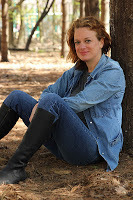
As a kid, I read a ton (a TON) of horse stories. It's a genre that I don't believe will ever go out of style, so I'm happy to have Jennifer Lyne here to post at The Bookshelf Muse. Her new book, Catch Rider
 , has recently been released, and she's here to talk about reviews and criticism—a topic she's well versed to discuss due to her experience as a writer and producer.
, has recently been released, and she's here to talk about reviews and criticism—a topic she's well versed to discuss due to her experience as a writer and producer.******
The idea that we writers are supposed to be perceptive and empathetic, yet also have hides like iguanas, has never made any sense to me. We’re trying to tell stories to entertain people, and when they attack us for it, it feels like failure. This is becoming more of an issue since everyone with internet access can post a review, and every writer can find that review after ten seconds of Googling.
When my first film came out, we got a great review in the Village Voice, and we were the happiest filmmakers in the world. Then Time Out wrote a vicious review, and I felt like I was going to die of humiliation. Not only was it devastating, it was infuriating, because they didn’t appreciate what we were trying to do or what we’d accomplished. After that experience, I made the conscious decision to not let someone else’s pen, or their bad mood, or their good mood, or their level of understanding or appreciation of what I’d done determine how I felt about my own work. That lasted until my second film, Loudmouth Soup. When, ironically, the Village Voice tore into my cast, I felt like a protective producer and actually wrote them a letter (which they printed), reminding them how experienced my actors are. Although I came out of it okay, and I really love the movie the way it is, it made me think of that old, unattributable quote, “Never pick a fight with a man who buys ink by the barrel.”
The lesson I learned from both experiences is that if you get a nasty, unhelpful review, don’t read it more than once. Neither of my films is for everyone – they’re both visceral and gritty - and some people will never want to watch them. Just read the good reviews over and over until you’re convinced that you’re Orson Wells and write another one! There is one thing that we need in place before we sit down and write, and that is some self-delusion.
Three years ago, I spent a morning talking to one of my idols, an iconic Hollywood screenwriter, at his house in Los Angeles. I was waiting for him to tell me some kind of secret, to reveal some strength or genius that I’d remember forever. But he said that after one of his films, he was terribly depressed because of the negative critical reaction. I started laughing. I actually put my head in my hands. “I’m serious!” he scolded. I could tell that he still hadn’t gotten over it.
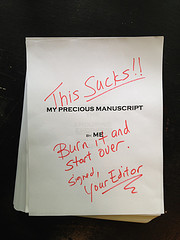
Photo Credit: LMRitchie at WANA Commons
So here are my personal rules about reviews: If I think the reader/critic didn’t understand what I was trying to do, I forget about it immediately. If I think they did, and they thought I failed, I think about why, file it away, and move on.
On the other hand, the most valuable thing a writer can get is good feedback on a work-in-progress from a friend or another writer. When you’re starting out, this is very hard. Your work is at its weakest, and you need the criticism the most. It’s a combustible proposition, asking a friend to read your work and give you feedback, and it’s something we all struggle with, at all levels.
I was thinking about this topic today, and I asked my writer/producer/director husband and our friend, a TV writer/producer (who just created the top rated show on a major cable channel!) for their advice for giving and getting criticism. Is it – as I believe – to help people do what they are trying to do without weighing in on the content? The TV producer immediately said that he’d been having this problem with executives. They’ll want to fire a director or re-edit a show, but they won’t be able to say why. Or they’ll make general negative comments about something, but when pressed, they can't back it up. It’s clear that this is the biggest day-to-day problem he faces – dealing with people who don’t know how to give specific, helpful feedback to the writers and directors.
It would help if the person giving feedback knew the goal of a project; is it a short story you want to get published? If so, where? Is it a script you want to make yourself, or submit to a studio, or use as a writing sample? Is it a novel you want to use to get an agent, or get into an MFA program? You’re not asking for someone’s opinion on your skill as a writer – you’re asking them to help you make the story more effective. My husband’s two cents is that often people will tell him how they would tell the story if it were their story. But it isn’t. Every writer has a unique point of view. You are expressing your point of view, and others should help you say what you want to say.
So how do you solicit badly needed advice? Develop a list of people in your life who “know how to give criticism.” I have my list; I know who understands how to give criticism in a positive and supportive way that helps me become a better writer. Writing is hard work, and you are exposing yourself so much; the last thing you need is anyone discouraging you from doing it. You can do that to yourself!
Remember, above all, that every writer, no matter how successful they are, has to accept criticism every time they hand their work over to someone else. It doesn’t matter who it is; whether they just won the National Book Award or an Academy Award or have a bestseller, they’re terrified to get feedback from first readers. Choose your readers carefully, and then listen, really listen, to what they have to say.
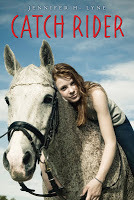
Jennifer H. Lyne grew up in Richmond Virginia, riding horses. She took a job after college in a livery barn in Hot Springs, Virginia, and eventually managed the lesson and boarding barn at the Homestead Resort. At 23, she decided to sell her horses and her Jeep and and move to Manhattan’s East Village, where she eventually location-scouted on more than fourteen feature films in New York City. Jennifer is co-founder of Sharpshooter Pictures, a video content production company, and has written and produced two feature films. She lives in New York City with her husband and their two sons. Catch Rider is her first novel.

Published on July 01, 2013 04:00
June 29, 2013
Physical Attribute Entry: CURVY Body Type
Physical description of a character can be difficult to convey—too much will slow the pace or feel 'list-like', while too little will not allow readers to form a clear mental image. If a reader cannot imagine what your character looks like, they may have trouble connecting with them on a personal level, or caring about their plight.
One way to balance the showing and telling of physical description is to showcase a few details that really help 'tell the story' about who your character is and what they've been through up to this point. Think about what makes them different and interesting. Can a unique feature, clothing choice or way they carry themselves help to hint at their personality? Also, consider how they move their body. Using movement will naturally show a character's physical characteristics, keep the pace flowing and help to convey their emotions.
CURVY BODY TYPE

Descriptors : buxom, voluptuous, curvaceous, sensual, bosomy
People Likely to have an Curvy Build : confident women, celebrities
Famous Examples :
Marilyn Monroe
Angelina Jolie (earlier years)
Dolly Parton
Beyonce
Mariah Carey
Eva Longoria
Jessica Biel
Thoughts on Curves:
With curves, attraction is in the eye of the beholder. For some, they don't consider a woman curvy unless she's got big boobs, a tiny waist and not a scrap of extra meat anywhere else. Others view full-figured women as 'curvy'. The best way to show curves is to show it through the POV character's perspective, honing in on what attracts him or her--be it some boom in the boombox, full cleavage, the hourglass shape, or something else.
Simile Help:
Connie floated across the room toward our table, swaying her hips like a runway model. She might be pushing forty, but the way her yellow dress melted into her curves caused even the prettiest twenty-something to bristle and send a glare her way.
When Allan said we were visiting his grandmother at the senior's home, I figured I'd see geriatrics in wheelchairs, not his totally stacked granny being circled by old guys like she was a cherry red mustang at a car show.
Clichés to Avoid: curves in all the right places
Twists on the Stereotypical Curvy Build:
Curvy women always seem to be beautiful and young. What's wrong with a middle-aged woman having strong bosom to waist to hip proportions? Or give us a woman with a beautiful body but a plain face?
Why not make your nasty character have a curvy build? The contrast of outer beauty and inner ugliness brings something new to the table.
Women with this body type scream sex symbol. Think of a role that is as unsexy as you get--the creepy or nosy neighbor lady down the block. The curvy plumber or septic tank inspector. The hardass school principal or the boss everyone can't stand. Heck, what about a curvy mother-in-law?

Published on June 29, 2013 04:00
June 26, 2013
10 Things You Don't Want In Your Novel
Crafting a story is a bit like juggling--so many elements must come into play at the right moment to put on an amazing show. There's the strong, compelling hero, damaged in some way that the reader identifies with, up against impossible odds. There's a vivid setting brimming with symbols and foreshadowing. And we can't forget witty dialogue, great pacing, conflict, tension, sensory description and a one-of-a-kind voice. So while we're keeping all these things in the front of our brain as we write, what are the biggest mistakes we want to avoid? Editor Jodie Renner is here to answer that question!
10 NO-NO’S FOR A COMPELLING STORY
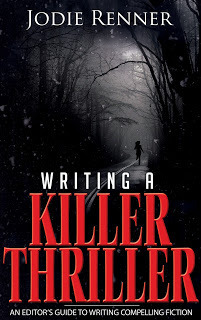
Today’s fiction readers are more discerning and busier than ever. They want to be swept away by a captivating story with a charismatic main character. They don’t want to be talked at. Don’t wrench them out of the fictive dream by addressing them as the author to explain things or otherwise taking them out of the character’s immediate world.
Avoid these storytelling gaffes in your novel or short story:
1. Too much description
Avoid writing paragraphs of description of the scenery, weather, and other surroundings. Write only the most compelling details, and from the main character’s point of view – how is the weather affecting her? Are details in his physical environment hindering his goals? And don’t get into too much detailed information on exactly what each character looks like and everything they’re wearing, especially for minor characters. Paint in large brushstrokes, mentioning only the most salient details, those that contribute to characterization.
2. An unlikeable protagonist
Make sure your main character is someone readers will want to bond with, root for, and follow for the whole story. Don’t make him or her cold, arrogant, difficult, demanding, unfeeling, insensitive, dismissive, timid, whiny, or wimpy. Go for sympathetic and likeable, but vulnerable, with some baggage.
3. A cardboard lead
Make sure your hero or heroine is multidimensional, with lots of personality and attitude, and plenty of drive and charisma. They need strengths but also inner conflict and secrets. Nobody wants to follow a bland, wishy-washy, overly ordinary lead character.
4. La-la land – Characters getting along too well
Even allies such as friends and family members should be interacting with some friction and an undercurrent of tension to add interest. If everybody’s getting along just fine, you need to cause some strife. Why? Because in fiction, happy equals boring.
5. Too much backstory
Don’t interrupt the story to give a block of background information on the character – where he grew up, how long he’s been at this job, marital history, etc. Weave in only the most relevant or intriguing details, in small bits as you go along, from his point of view, not as the author, and tie it in with what’s happening – make it directly relevant to the scene. Flashbacks work well, too, but keep them brief, and again, something in the scene causes the character to start thinking about his past. It doesn’t just come out of nowhere.
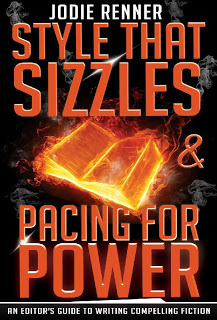
6. Omniscient point of view
Avoid interrupting the narrative as the author, addressing the readers to explain a point or tell them about future or past events, other characters, or something going on somewhere else, all from outside the viewpoint of the character. Keep the readers in the character’s head and world at that moment, firmly ensconced in the fictive dream.
7. Information dumps
Avoid jumping in as the author to explain technical details or other information to the readers in a lump of exposition. Give them the minimal info they need for the story, still in the character’s point of view, with tension and attitude, through searching or a question-and-answer dialogue with someone else. Style That Sizzles & Pacing for Power goes into more detail on this, with examples and tips.
8. AYKB – “As you know, Bob...”
That’s a form of info dump through dialogue, where one character is telling another something they both know, just to impart that info to the readers, like “As you know, Bob, we used to live on a farm until we moved to the city when you were ten.” Clunky, amateurish and transparent.
9. Too many similar characters and/or characters all sound the same – like the author
Make your characters different enough to add contrast, dissonance and sparks. And make sure each character’s speaking patterns and word choices reflect their gender, age, background, education, interests, and personality. A rough character isn’t going to speak the same way as a professional, and men and women speak quite differently, especially when stressed. This applies to their thoughts as well, of course, and their general internal observations, analysis, and planning.
10. And the biggest storytelling gaffe of all – not enough conflict & tension
Every single scene needs conflict and a change of some kind, to keep readers turning the pages. Every single page needs tension. If your story is lagging, it’s because there isn’t enough discord or friction. If you have any boring scenes or chapters, revise them or delete them, saving any critical parts to add to other scenes. Let the sparks fly and get the readers worrying about your protagonist!

Do you have any more storytelling gaffes to avoid? Let us know in the comments below!
Jodie Renner, a freelance fiction editor specializing in thrillers, has published two books to date in her series, An Editor’s Guide to Writing Compelling Fiction: WRITING A KILLER THRILLER, with the updated, expanded edition now available in e-book and paperback on Amazon; and STYLE THAT SIZZLES & PACING FOR POWER, available in paperback, for Kindle, and in other e-book formats.
For more info, please visit Jodie’s author website or editor website.

10 NO-NO’S FOR A COMPELLING STORY

Today’s fiction readers are more discerning and busier than ever. They want to be swept away by a captivating story with a charismatic main character. They don’t want to be talked at. Don’t wrench them out of the fictive dream by addressing them as the author to explain things or otherwise taking them out of the character’s immediate world.
Avoid these storytelling gaffes in your novel or short story:
1. Too much description
Avoid writing paragraphs of description of the scenery, weather, and other surroundings. Write only the most compelling details, and from the main character’s point of view – how is the weather affecting her? Are details in his physical environment hindering his goals? And don’t get into too much detailed information on exactly what each character looks like and everything they’re wearing, especially for minor characters. Paint in large brushstrokes, mentioning only the most salient details, those that contribute to characterization.
2. An unlikeable protagonist
Make sure your main character is someone readers will want to bond with, root for, and follow for the whole story. Don’t make him or her cold, arrogant, difficult, demanding, unfeeling, insensitive, dismissive, timid, whiny, or wimpy. Go for sympathetic and likeable, but vulnerable, with some baggage.
3. A cardboard lead
Make sure your hero or heroine is multidimensional, with lots of personality and attitude, and plenty of drive and charisma. They need strengths but also inner conflict and secrets. Nobody wants to follow a bland, wishy-washy, overly ordinary lead character.
4. La-la land – Characters getting along too well
Even allies such as friends and family members should be interacting with some friction and an undercurrent of tension to add interest. If everybody’s getting along just fine, you need to cause some strife. Why? Because in fiction, happy equals boring.
5. Too much backstory
Don’t interrupt the story to give a block of background information on the character – where he grew up, how long he’s been at this job, marital history, etc. Weave in only the most relevant or intriguing details, in small bits as you go along, from his point of view, not as the author, and tie it in with what’s happening – make it directly relevant to the scene. Flashbacks work well, too, but keep them brief, and again, something in the scene causes the character to start thinking about his past. It doesn’t just come out of nowhere.

6. Omniscient point of view
Avoid interrupting the narrative as the author, addressing the readers to explain a point or tell them about future or past events, other characters, or something going on somewhere else, all from outside the viewpoint of the character. Keep the readers in the character’s head and world at that moment, firmly ensconced in the fictive dream.
7. Information dumps
Avoid jumping in as the author to explain technical details or other information to the readers in a lump of exposition. Give them the minimal info they need for the story, still in the character’s point of view, with tension and attitude, through searching or a question-and-answer dialogue with someone else. Style That Sizzles & Pacing for Power goes into more detail on this, with examples and tips.
8. AYKB – “As you know, Bob...”
That’s a form of info dump through dialogue, where one character is telling another something they both know, just to impart that info to the readers, like “As you know, Bob, we used to live on a farm until we moved to the city when you were ten.” Clunky, amateurish and transparent.
9. Too many similar characters and/or characters all sound the same – like the author
Make your characters different enough to add contrast, dissonance and sparks. And make sure each character’s speaking patterns and word choices reflect their gender, age, background, education, interests, and personality. A rough character isn’t going to speak the same way as a professional, and men and women speak quite differently, especially when stressed. This applies to their thoughts as well, of course, and their general internal observations, analysis, and planning.
10. And the biggest storytelling gaffe of all – not enough conflict & tension
Every single scene needs conflict and a change of some kind, to keep readers turning the pages. Every single page needs tension. If your story is lagging, it’s because there isn’t enough discord or friction. If you have any boring scenes or chapters, revise them or delete them, saving any critical parts to add to other scenes. Let the sparks fly and get the readers worrying about your protagonist!

Do you have any more storytelling gaffes to avoid? Let us know in the comments below!
Jodie Renner, a freelance fiction editor specializing in thrillers, has published two books to date in her series, An Editor’s Guide to Writing Compelling Fiction: WRITING A KILLER THRILLER, with the updated, expanded edition now available in e-book and paperback on Amazon; and STYLE THAT SIZZLES & PACING FOR POWER, available in paperback, for Kindle, and in other e-book formats.
For more info, please visit Jodie’s author website or editor website.

Published on June 26, 2013 04:00
June 19, 2013
Using a Critique Checklist, or, How Not to Look Like a Twit

When writers ask me for advice, the first thing I emphasize is the importance of finding a critique group or partners. These support systems are invaluable for adding the objectivity we lack and helping us see where our work needs work. They also provide an opportunity to share our knowledge with others—though many writers may struggle with this, especially when reading or hearing a more experienced author’s work.
From time to time, I have this problem—not so much with the technical stuff like grammar and typos and such, but with the big picture items. When a really talented author reads an excerpt at my face-to-face group, I might think that it’s wonderful. Astonishingly brilliant. Then someone else mentions a problem they noticed and I think, Wow, that’s totally true. How’d I miss that?
Out of a desire to a) help my fellow writers, and b) not sit there feeling like a twit, I started a list of observations that I frequently hear at critique group. Then I turned the observations into questions. Now, when I’m hearing a piece that’s so good I can’t pick out any problems, I consult my checklist. Many times, I’m able to identify a weak area from among these possibilities:
Overall Story Issues:
Is the story problem clear?
Is the voice realistic and consistent?
Does the voice sound right for the author’s target audience? (Too young? Too old?)
Does the chosen point of view (first, close third, omniscient, etc.) create the right level of intimacy or distance for the story?
Are there tantalizing questions, or is everything being explained along the way?
Has the story started in the right place?
Does the character’s situation continue to worsen, or is the author letting him off the hook and breaking tension?
Scene Issues:
What does the character want in this scene?
What’s the conflict?
Does the character’s emotion change or remain the same throughout the scene?
Are the descriptions multi-sensory, or primarily visual?
Is too much information being shared? Can some of it be revealed later?
Does the scene move the story forward? (Is it necessary?)
Does the scene go on too long? Should it end earlier? Be split in two?
Pacing Issues:
Is the pace dragging anywhere?
Does a given section feel like it’s gone on for too long and should be condensed?
Is there too much narrative?
Too much telling?
Too much backstory?
Character Issues:
Is there enough character emotion?
Is the character well-rounded? Flawed?
Is the dialogue realistic?
Is the character consistent in his speech, actions, and responses to stimuli?
Does the character evoke reader empathy in some way?
The beauty of a list like this is that while it works well for critiquing others, it also works on my own writing. When critiquers admit that their attention is drifting, I look at the Scene Issues to see if any of them are to blame. If someone isn’t connecting with my character, I edit with the Character Issues in mind. And when I’m reading my own work and I get that niggly feeling that something is off, I can usually find the problem on this list.
If you think something like this might be beneficial for you, take note of the suggestions being made at your critique group or by your individual partners and jot them down. Better yet, print out this list and add to it. And please share your knowledge in the comments section by adding any of the questions that you like to ask when critiquing; I’d love to flesh out my list.
What other problems do you frequently find, in your own writing or in the pieces you critique?

Published on June 19, 2013 07:08
June 15, 2013
Physical Traits Entry: Athletic Build
Physical description of a character can be difficult to convey—too much will slow the pace or feel 'list-like', while too little will not allow readers to form a clear mental image. If a reader cannot imagine what your character looks like, they may have trouble connecting with them on a personal level, or caring about their plight.
One way to balance the showing and telling of physical description is to showcase a few details that really help 'tell the story' about who your character is and what they've been through up to this point. Think about what makes them different and interesting. Can a unique feature, clothing choice or way they carry themselves help to hint at their personality? Also, consider how they move their body. Using movement will naturally show a character's physical characteristics, keep the pace flowing and help to convey their emotions.
ATHLETIC BUILD

Descriptors: Broad shoulders and back, narrow waist, flat stomach, toned and enlarged muscles, lean frame, low body fat, well-proportioned, a ripped physique
People Likely to have an Athle tic Build: professional and amateur athletes, health-conscious individuals, physical trainers, firefighters, police officers
Famous Examples :
Bruce Lee
Channing Tatum
Usain Bolt
Lolo Jones
Michael Jordan
Bo Jackson
Simile and Metaphor Help:
Andy stuffed stack after stack of pancakes into his mouth, his muscles bulging in his perfectly-proportioned body like boulders being pushed to the surface by tectonic activity. It wasn't fair, the differences between guys and girls. I picked at my fruit salad and scowled.
Muscular and scowling, she held the tennis racket like a club and hopped from foot to foot—a lion, scenting weaker prey and biding its time. I gripped my own racket to keep it from shaking and swallowed. Hard.
Clichés to Avoid : the athletic body being compared to a machine
Twists on the Stereotypical Athletic Build:
Athletic builds are almost always tanned, dark-skinned, or some other enviable shade. How about an athletic body that's a little less desirable, like pale, veined, acned, or sickly?
This body type is almost always well-proportioned according to society's standards. What about an extremely short person with an athlete's body?
Athletic bodies usually take a lot of deliberate work to get into the desired condition. A character with a naturally athletic build who doesn't have to work at it can cause for some interesting conflict among jealous or petty friends—especially if the character doesn't have the typically disciplined mindset to accompany it.
HINT: When describing any part of the body, try to use cues that show the reader more than just a physical description. Make your descriptions do double duty. Example: The treadmill beeped and Jess slid off, trying not to fall over. The workout had been a killer, and then the run on top of that...She wiped her face and caught a glimpse of herself in the mirror. Her muscles stood out, nearly pulsing after what she'd put them through. And by the looks of it, she'd managed to work off that cookie from yesterday. But volleyball tryouts were tomorrow, and she wasn't the only one vying for a starting spot. She tossed the towel over her shoulder and headed for the pull-up bar.

Published on June 15, 2013 01:30
June 11, 2013
Foreign Rights Agents: Everything You Need To Know (& Why You May Want One!)
Foreign Rights. Now more than ever, we're seeing translation rights buzz and increasing a book's global range. And why not? Authors work incredibly hard to create the best book they can, and language should not be a barrier to finding readers to share stories with.
Because of this, it is our pleasure to welcome Marleen Seegers , Foreign Rights Agent for 2Seas Literary (& our FR agent for The Emotion Thesaurus !) Marleen recently sold Korean rights for the ET, and I asked her if she could peel back the curtain on what a FR agent does, and the process of finding the right match. This is really valuable info, so please read on...
~ ~ * ~ ~
Give Your Book a Second Life: Get It into Foreign Markets

Tens of thousands of books are translated into another language each year. The most translated author is the Queen of Crime Agatha Christie, followed by Jules Verne and William Shakespeare who occupy respectively the second and third positions.
Looking at the global market, roughly 60% of all translations around the world are books originally written in English. It comes as no surprise, then, that only 3% of the books that are published in the US are translations—in the UK, this is even a mere 2.5%! By comparison, in Poland a smashing 46% of books published are works in translation, in Germany over 12%, in Spain around 24%, and in France about 15%.
This leads us to conclude that, particularly as an English-language author, it can be lucrative to try selling your book into foreign markets. Besides the additional income, isn’t it wonderful to show your friends and family a copy of your book in French or Korean?
Selling foreign rights is just one of the many possibilities to give your book a second life and create an extra revenue stream. Movie/theater/comic strip adaptations, audio books, and merchandising are other examples of the so-called “subsidiary” rights umbrella.
“Primary” book publishing rights include hardcover, trade paperback, mass market, and digital editions of your book in its original language.
As a foreign rights agent, I work with authors, publishers, and literary agents from all over the world to help them get their books published in foreign languages.
So what does the work of a foreign rights agent consist of?
First of all, I read—a lot. Yes, a good foreign rights seller has to LOVE reading! Even though Pierre Bayard wrote an entire book on how to talk about books you haven’t read, it’s virtually impossible to pitch a title to foreign publishers without having read (at least part of) it—which can be frustrating, as I have so many titles to read that sometimes I don’t even have the time to finish books that I’m really enjoying!
That brings us to the second stage of foreign rights sales: pitching titles! As soon as I’ve decided a title has enough potential abroad, we include it in our online catalog. We then send out a newsletter to present the title to our network of foreign publishers, literary scouts and co-agents.
You might think foreign rights sellers are rather invisible actors of the publishing scene, but let me introduce you to an even more obscure job: literary scouts. They try to discover possible bestsellers as early as possible and alert the foreign publishers they work for. This enables the latter to acquire the translation rights before everyone else knows about these titles, usually for a relatively low advance. You can find more information on scouts here. They are very important contacts for foreign rights sellers, as they can make or break a deal.
Additionally, we work with co-agents in territories other than our “specialty markets,” which are Holland, Scandinavia, Germany, France, and the English language. They are often locally based, know their specific market through and through, and handle submissions, rights inquiries, and negotiations on our behalf.
After our initial newsletter, we take the initiative to send the book and further information to those publishers who are likely to be interested in the title in question—because they have published (one of) the author’s previous titles, or the title is a great match with their catalog, or we know they are personally interested in the subject, or all of the above.
How do we know what foreign publishers like/dislike?
We’ve built relationships with them for many years, meeting with them in person during international book fairs, talking to them on the phone and via Skype. Interpersonal skills are extremely important in foreign rights sales, as personal relationships can (will!) make a real difference. Speaking another language besides English is also very helpful, as you connect more easily with the publishers of that specific language territory.
Attending international book fairs is truly indispensable, since that’s where most of the action happens! I visit two not-to-be-missed book fairs each year: the Frankfurt Book Fair which always takes place in October, and the London Book Fair in April. While I’m in Europe for these two fairs, I also like to visit publishers in Amsterdam and Paris, two of our “specialty markets.” Furthermore, I attend at least one other, more “local” book fair such as this year’s Rio de Janeiro and Gothenburg Book Fairs.
The Frankfurt and London Book Fairs can be compared to massive speed dating events: every 30 minutes I have meetings with different foreign publishers to whom I show our print catalogs and pitch specific titles. These meetings start at 9 am (sometimes even at breakfast) and last till 6 or 7 pm. In the evening I attend dinners and cocktail parties, which are great networking opportunities in a more relaxed atmosphere.
While these two fairs are the highlights of the international publishing calendar, we receive requests for titles and offers throughout the year.
When a Publisher Offers
If a foreign publisher offers for one of our titles, the first thing we do is check which other publishers in that specific country are also considering this title. Foreign rights agreements are always signed on an exclusive basis, which means we can only sign one contract with, say, a French publisher for the French translation rights in a specific title. This French publisher then owns the exclusive French rights for the duration of the agreement (between 5 and 10 years).
So it’s important to give the other French publishers who are also considering this title a chance to offer as well. We give them a deadline, usually one week to 10 days, to make a decision. If no one else offers, we start negotiating with the offering publisher.
If we receive one or several other offers, we organize an auction—that’s very exciting! We ask all offering publishers to send us their best offer, usually three or four days later. Note that “best offer” doesn’t always mean “highest offer.” Of course we take the advance they propose into account, but we also look at the other conditions like the proposed royalties, other titles and authors in their list, the publisher’s reputation, our previous experiences with them, etc. We submit the information about all the best offers to the rights holder of the book (our client), who will have the final say in which offer to accept. We do of course give our opinion!
After the Deal
Our involvement doesn’t end once a contract is signed: further activities include closely following the publication process, making sure due payments are made and complimentary copies are sent (so you can show off that French or Korean edition of your book!), and receiving and checking annual sales reports.
You get it, being a foreign rights agent is an incredibly varied job! Every day is filled with different activities and challenges, and that’s what I love about it. You make books travel and authors happy, get to travel yourself, meet interesting people from all over the world, and get to read some of the most inspiring books around!

If you want to know more about my activities, please check www.2seasagency.com and join our international community of authors and publishing professionals at http://www.facebook.com/2seasagency.
WOW, great to see how it all works! Thank you very much, Marleen. This is such great information to have on hand, and demystifies the process for all of us.
Your Turn: Do you have a Foreign Rights Agent? Have you looked into getting one? Which language would you love to see your future book translated into? Tell us in the comments!
* * *
For more writing resources, craft tips, giveaways and news, you can sign up for our newsletter HERE. Also, don't forget to grab a free copy of the Emotion Amplifiers PDF in the sidebar, which is filled with body language ideas on how to show conditions like Pain, Stress, Addiction, Illness, Attraction, Hunger, Distraction, Inebriation etc. to make your characters more emotionally reactive!

Because of this, it is our pleasure to welcome Marleen Seegers , Foreign Rights Agent for 2Seas Literary (& our FR agent for The Emotion Thesaurus !) Marleen recently sold Korean rights for the ET, and I asked her if she could peel back the curtain on what a FR agent does, and the process of finding the right match. This is really valuable info, so please read on...
~ ~ * ~ ~
Give Your Book a Second Life: Get It into Foreign Markets

Tens of thousands of books are translated into another language each year. The most translated author is the Queen of Crime Agatha Christie, followed by Jules Verne and William Shakespeare who occupy respectively the second and third positions.
Looking at the global market, roughly 60% of all translations around the world are books originally written in English. It comes as no surprise, then, that only 3% of the books that are published in the US are translations—in the UK, this is even a mere 2.5%! By comparison, in Poland a smashing 46% of books published are works in translation, in Germany over 12%, in Spain around 24%, and in France about 15%.
This leads us to conclude that, particularly as an English-language author, it can be lucrative to try selling your book into foreign markets. Besides the additional income, isn’t it wonderful to show your friends and family a copy of your book in French or Korean?
Selling foreign rights is just one of the many possibilities to give your book a second life and create an extra revenue stream. Movie/theater/comic strip adaptations, audio books, and merchandising are other examples of the so-called “subsidiary” rights umbrella.
“Primary” book publishing rights include hardcover, trade paperback, mass market, and digital editions of your book in its original language.
As a foreign rights agent, I work with authors, publishers, and literary agents from all over the world to help them get their books published in foreign languages.
So what does the work of a foreign rights agent consist of?
First of all, I read—a lot. Yes, a good foreign rights seller has to LOVE reading! Even though Pierre Bayard wrote an entire book on how to talk about books you haven’t read, it’s virtually impossible to pitch a title to foreign publishers without having read (at least part of) it—which can be frustrating, as I have so many titles to read that sometimes I don’t even have the time to finish books that I’m really enjoying!
That brings us to the second stage of foreign rights sales: pitching titles! As soon as I’ve decided a title has enough potential abroad, we include it in our online catalog. We then send out a newsletter to present the title to our network of foreign publishers, literary scouts and co-agents.
You might think foreign rights sellers are rather invisible actors of the publishing scene, but let me introduce you to an even more obscure job: literary scouts. They try to discover possible bestsellers as early as possible and alert the foreign publishers they work for. This enables the latter to acquire the translation rights before everyone else knows about these titles, usually for a relatively low advance. You can find more information on scouts here. They are very important contacts for foreign rights sellers, as they can make or break a deal.
Additionally, we work with co-agents in territories other than our “specialty markets,” which are Holland, Scandinavia, Germany, France, and the English language. They are often locally based, know their specific market through and through, and handle submissions, rights inquiries, and negotiations on our behalf.
After our initial newsletter, we take the initiative to send the book and further information to those publishers who are likely to be interested in the title in question—because they have published (one of) the author’s previous titles, or the title is a great match with their catalog, or we know they are personally interested in the subject, or all of the above.
How do we know what foreign publishers like/dislike?
We’ve built relationships with them for many years, meeting with them in person during international book fairs, talking to them on the phone and via Skype. Interpersonal skills are extremely important in foreign rights sales, as personal relationships can (will!) make a real difference. Speaking another language besides English is also very helpful, as you connect more easily with the publishers of that specific language territory.
Attending international book fairs is truly indispensable, since that’s where most of the action happens! I visit two not-to-be-missed book fairs each year: the Frankfurt Book Fair which always takes place in October, and the London Book Fair in April. While I’m in Europe for these two fairs, I also like to visit publishers in Amsterdam and Paris, two of our “specialty markets.” Furthermore, I attend at least one other, more “local” book fair such as this year’s Rio de Janeiro and Gothenburg Book Fairs.
The Frankfurt and London Book Fairs can be compared to massive speed dating events: every 30 minutes I have meetings with different foreign publishers to whom I show our print catalogs and pitch specific titles. These meetings start at 9 am (sometimes even at breakfast) and last till 6 or 7 pm. In the evening I attend dinners and cocktail parties, which are great networking opportunities in a more relaxed atmosphere.
While these two fairs are the highlights of the international publishing calendar, we receive requests for titles and offers throughout the year.
When a Publisher Offers
If a foreign publisher offers for one of our titles, the first thing we do is check which other publishers in that specific country are also considering this title. Foreign rights agreements are always signed on an exclusive basis, which means we can only sign one contract with, say, a French publisher for the French translation rights in a specific title. This French publisher then owns the exclusive French rights for the duration of the agreement (between 5 and 10 years).
So it’s important to give the other French publishers who are also considering this title a chance to offer as well. We give them a deadline, usually one week to 10 days, to make a decision. If no one else offers, we start negotiating with the offering publisher.
If we receive one or several other offers, we organize an auction—that’s very exciting! We ask all offering publishers to send us their best offer, usually three or four days later. Note that “best offer” doesn’t always mean “highest offer.” Of course we take the advance they propose into account, but we also look at the other conditions like the proposed royalties, other titles and authors in their list, the publisher’s reputation, our previous experiences with them, etc. We submit the information about all the best offers to the rights holder of the book (our client), who will have the final say in which offer to accept. We do of course give our opinion!
After the Deal
Our involvement doesn’t end once a contract is signed: further activities include closely following the publication process, making sure due payments are made and complimentary copies are sent (so you can show off that French or Korean edition of your book!), and receiving and checking annual sales reports.
You get it, being a foreign rights agent is an incredibly varied job! Every day is filled with different activities and challenges, and that’s what I love about it. You make books travel and authors happy, get to travel yourself, meet interesting people from all over the world, and get to read some of the most inspiring books around!

If you want to know more about my activities, please check www.2seasagency.com and join our international community of authors and publishing professionals at http://www.facebook.com/2seasagency.
WOW, great to see how it all works! Thank you very much, Marleen. This is such great information to have on hand, and demystifies the process for all of us.
Your Turn: Do you have a Foreign Rights Agent? Have you looked into getting one? Which language would you love to see your future book translated into? Tell us in the comments!
* * *
For more writing resources, craft tips, giveaways and news, you can sign up for our newsletter HERE. Also, don't forget to grab a free copy of the Emotion Amplifiers PDF in the sidebar, which is filled with body language ideas on how to show conditions like Pain, Stress, Addiction, Illness, Attraction, Hunger, Distraction, Inebriation etc. to make your characters more emotionally reactive!

Published on June 11, 2013 04:00
June 8, 2013
Physical Attribute Entry: HIPS
Physical description of a character can be difficult to
convey—too much will slow the pace or feel 'list-like', while too
little will not allow readers to form a clear mental image. If a reader
cannot imagine what your character looks like, they may have trouble
connecting with them on a personal level, or caring about their plight.

photo credit: Alex Dram via photopin cc
One
way to balance the showing and telling of physical description is to
showcase a few details that really help 'tell the story' about who your
character is and what they've been through up to this point.
Think about
what makes them different and interesting. Can a unique feature,
clothing choice or way they carry themselves help to hint at their
personality?
Also, consider how they move their body. Using movement
will naturally show a character's physical characteristics, keep the
pace flowing and help to convey their emotions.
HIPS
Descriptor s : narrow, bony, full, straight, curvy, slim, thin, rounded, thick, broad, hidden, wide, small, well-rounded, generous, slender, straight, curvaceous, ample, tapered, scant, chunky, stocky, sharp, shapely, solid
Things HIPS do:
Bump: bonk, push, shove, poke, kiss, butt, slam, smack, hit, slam, check
Brush: nudge, graze, sweep, rub, caress, glance, press, stroke, touch, slide, goose
Buck: rise, lift, climb, boost, heft, hike, hoist, heave, thrust, shift, pump, tilt
Key Emotions and Related HIP Gestures:
Confidence: A cocked hip is often a sign of confidence or dominance. Thrusting the pelvis forward, or using one's hands to frame the hips by tucking one's thumbs into belt loops draws attention to one's virility and sense of command within the situation.
Contempt: A single hand on the hip with the body slightly curved around it is a strong message of contempt
Impatience: A hand on the hip (one or both) with shoulders rolling forward slightly makes the body seem bigger and more menacing, and is a stiff message of impatience.
Simile and Metaphor Help:
Tonya was as curvy as they come, the slope of her hips winding like a switchback through the mountains.
Tom pulled off his shirt and Deanne's breath caught. His body, hard and lean, begged to be touched, but it was the dual ridge lines jutting above low slung jeans that she anchored her hands to.
Clichés to Avoid :
hand on the hips--this very common gesture requires fresh writing to use it, and only if it must be used. Challenge yourself to see if there's another way to show the emotion you're going for.
shoot from the hip--an idiom for thinking on one's feet or making an educated guess
HINT: When
describing any part of the body, try to use cues that show the reader
more than just a physical description. Make your descriptions do double
duty. Example:
Grandma might be short, but when she got riled up, her hips were wild things. You learned to get outta her way when she stomped across the room, sideswiping stools and toddlers alike.
BONUS TIP: The
Colors, Textures & Shapes Thesaurus in our sidebar might help
you find a fresh take on some of the descriptors listed above!

Published on June 08, 2013 03:00
May 31, 2013
Stepping Out & 7 DEADLY WRITING SINS
Hi guys! Becca and I are taking a wee blogging break while we play catch up in our lives. As some of you know, I'm moving, so every day is filled with packing and unpacking, accepting delivery for X while coordinating a pick up for Y, not to mention meeting technicians for internet, satellite, phone, security system, etc. Oh the FUN I am having. Um, yeah right. Then of course there's furniture to sell, the kids needing to finish schoo & study for exams, kid # 2's birthday, having a surprise house guest for a week and a friend's wedding. *pants* Oh and teaching my son to drive (he's very good, so you are all safe, I promise!)

The day we almost broke Magic Kingdom
Becca's world is packed full of crazy too, because that's just how she rolls. I am happy to report that she (barely) survived the gauntlet of school ending & the last week recitals, plays, soccer games, end of year grad ceremonies and her daughter's birthday (our oldest kids have birthdays a day apart--how cool is that? WE TOTALLY PLANNED IT THAT WAY. Okay, maybe not, but I just love that it happened anyhow.) Now she's getting ready for a trip to see family and to get her Mountain Dew addiction under control.
And of course, we are also diligently working on 2 NEW thesaurus books for you: The Trait Thesaurus: A Writer's Guide To Character Flaws & The Trait Thesaurus: A Writer's Guide To Positive Character Attributes. It is so enjoyable working on these because we think they are shaping up into great resources for character creation. We have not set a date yet (and we want to release both books together), but it will likely be August or September. Many people have contacted us, asking to be kept in the loop once these books are out, so we have a mailing list set up. If you would like to be added to it, just let us know. OR, we recommend signing up for our popular Writing Resource Newsletter, where we add status updates in each issue, along with other writerly goodies including free books. You can do that by CLICKING HERE!
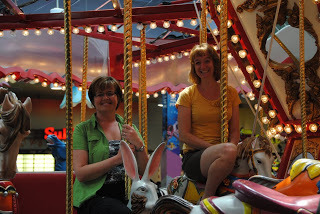
Scaring small children at a Phoenix mall
Oh and a bit of news...THE EMOTION THESAURUS is being translated into KOREAN. That's right, our wonderbar Foreign Rights agent Marlene Seegers sold Korean rights for the ET. We are so excited!
All righty, so, in lieu of some jazz hands and tap dancing style entertainment while we're away from the blog, I'm leaving you some of our past posts that would sure love some LUV. (Really, they get insecure when they drop off the blog's front page. I had to talk one off the ledge just last week!)
You guys are the very best supporters and we thank you all for being so incredibly generous with your time by visiting us here.
Have a terrific week!
The 7 Deadly Sins of Novel Writing:
SIN #1: Low Stakes
SIN # 2: Counterfeit Characters
SIN # 3: Missing the Mark on Voice & POV
SIN #4: Plot Snafus
SIN #5: Flat Wordsmithing
SIN #6: Dialogue Disaster
SIN #7: Too Much Information
BONUS SIN: Disappointing The Reader
So...what's your cardinal sin? Or are you an equal-opportunity sinner? Let us know in the comments!


The day we almost broke Magic Kingdom
Becca's world is packed full of crazy too, because that's just how she rolls. I am happy to report that she (barely) survived the gauntlet of school ending & the last week recitals, plays, soccer games, end of year grad ceremonies and her daughter's birthday (our oldest kids have birthdays a day apart--how cool is that? WE TOTALLY PLANNED IT THAT WAY. Okay, maybe not, but I just love that it happened anyhow.) Now she's getting ready for a trip to see family and to get her Mountain Dew addiction under control.
And of course, we are also diligently working on 2 NEW thesaurus books for you: The Trait Thesaurus: A Writer's Guide To Character Flaws & The Trait Thesaurus: A Writer's Guide To Positive Character Attributes. It is so enjoyable working on these because we think they are shaping up into great resources for character creation. We have not set a date yet (and we want to release both books together), but it will likely be August or September. Many people have contacted us, asking to be kept in the loop once these books are out, so we have a mailing list set up. If you would like to be added to it, just let us know. OR, we recommend signing up for our popular Writing Resource Newsletter, where we add status updates in each issue, along with other writerly goodies including free books. You can do that by CLICKING HERE!

Scaring small children at a Phoenix mall
Oh and a bit of news...THE EMOTION THESAURUS is being translated into KOREAN. That's right, our wonderbar Foreign Rights agent Marlene Seegers sold Korean rights for the ET. We are so excited!
All righty, so, in lieu of some jazz hands and tap dancing style entertainment while we're away from the blog, I'm leaving you some of our past posts that would sure love some LUV. (Really, they get insecure when they drop off the blog's front page. I had to talk one off the ledge just last week!)
You guys are the very best supporters and we thank you all for being so incredibly generous with your time by visiting us here.
Have a terrific week!
The 7 Deadly Sins of Novel Writing:
SIN #1: Low Stakes
SIN # 2: Counterfeit Characters
SIN # 3: Missing the Mark on Voice & POV
SIN #4: Plot Snafus
SIN #5: Flat Wordsmithing
SIN #6: Dialogue Disaster
SIN #7: Too Much Information
BONUS SIN: Disappointing The Reader
So...what's your cardinal sin? Or are you an equal-opportunity sinner? Let us know in the comments!

Published on May 31, 2013 17:05
May 28, 2013
5 Tips To Landing That Interview
I'm handing over the keys today to good friend Lisa Hall-Wilson, an award-winning journalist, passionate writer and blogger who knows the benefit of forging relationships and conducting interviews! Some of you probably know Lisa from her blog and friendly chatter online. If she's new to you, I highly recommend getting to know her on Facebook, Twitter and WANATribe!

Lisa's offering us tips on how to ask for an interview, and believe me, knowing how to approach people is important. Last year for The Emotion Thesaurus book release, I approached Industry sponsors for our Random Acts Of Kindness Blitz and managed to secure over $1500 worth of prize donations. It didn't happen because I 'knew' people, or because I was some mega celebrity *snort* or anything else. I simply knew how to ask.
So here's Lisa! Welcome, welcome!
~~ * ~~
Thanks so much for having me here!
Stephen King, in
his book On Writing, talks about a writer’s toolbox. Being able to ask
for and conduct a great interview is one of the most useful research
tools a writer can develop. A good interview can lend veracity and
authenticity to any story – non-fiction, fiction, blogs, articles, etc.
But how? How do you get the interview?
Ask!
Sounds overly simple doesn’t it? It’s really that easy. Before you ask though, know what you’re asking them to speak to, and never waste their time. Don’t ask questions they can’t speak to or you could find the answers to on Google. You need a source to give you the details, the insight, the experience, their opinions you can’t find out on your own. Please do your research. Read their website or blog if they have one, read old news clippings, watch their videos on Youtube – whatever is available. All the time I get people asking me – how do I get published? Ummm - look it up! That’s too broad a topic. You’re more likely to get a positive response by asking me to speak to a specific something I know about.
With a cold query – meaning you have no prior connection to this person, you may contact them directly through a website or email. If this person has a busy schedule, or is fairly successful in their field/art, you may need to be approved by a gatekeeper like a personal or administrative assistant, a publicist or personal manager. People with this level of success get a lot of queries and so have built in extra layers to cut down on the “noise” so they can continue to do what they do. Doesn’t mean they’re inaccessible, but it can mean extra work for you. For one celebrity interview I had to go through three publicists *head to desk* Was the interview worth it? *smiles and nods* Oh yeah. Only the most pertinent, interesting, relevant queries will make it through though so know that going in.
5 Tips To Landing That Interview
• Don’t disparage yourself. “I would love to interview you for my blog, but my blog isn’t that big. I don’t really have a lot of traffic so I would understand why you wouldn’t want to do it. But I figured there’s no harm in asking.” Stop whining. You’re not being humble, you’re making yourself easy to dismiss. You’re a writer – chin up, pen out!
• Do tell them how you can help them. Being specific about who your audience is can help. People are always looking for new opportunities to get in front of and grow their audience.
Getting mentioned anywhere by an objective third party (that’s you) is publicity gold. They can’t buy that kind of public endorsement with a full-page ad. They’re aware that you have something valuable to offer, this is in your favor.
If this is for a fiction novel, most professionals LOVE to talk about their work. Most professionals love the idea of helping a novelist with a story because they all hate it when a writer gets the details wrong.
• Be polite. Using threats, ultimatums, or just plain being rude will not get you very far. An interview source wants assurances that you’re going to do this with integrity. They’re not interested in being miss-quoted, or disparaged publicly. Put your best professional foot forward.
• Be persistent. Be Creative. Aim high, but be realistic. I’m much more likely to get an interview from a local cop than I am the chief of police. I once did a tour of the local fire hall for a novel I was working on. It was the only way I could think of to talk to a firefighter. So, I spent an hour following this guy around, slipping in questions about specific scenes from my novel. Then the Chief walks out. “You still on that tour?” He comes over and the next thing I know every firefighter on duty is standing in the truck bay swapping war stories so the writer ‘can get it right.’ That was pure chance, but writer gold!
• Ask them to recommend another source. On a cold query, I often include a line something to the effect – If you’re unable to help me on this (note – I’m not disparaging myself) can you suggest someone, or would you forward this email to someone who may be able to help. I had an interview request make it all the way to Parliament Hill (that’s Ottawa for those outside of Canada). It’s the whole idea of six degrees of separation. Everyone knows someone further up the chain. People are often very willing to help if you’re polite and professional.
Have you asked for an interview? What’s the hardest part about doing an interview? Do you have a funny interview story?

Lisa Hall-Wilson is an award-winning freelance writer for the faith-based market specializing in interviews, profiles, social justice initiatives, Facebook administration, press releases, print and web marketing copy. She writes dark fantasy novels, blogs Through The Fire, and is a social media instructor for WANA International. She's interviewed best-selling authors, JUNO-winning musicians, comedians, drug addicts, former prostitutes, police officers, firefighters, pastors, and people with a great story to tell.
Lisa’s latest online course for writers How To Get Them Talking: Learn To Interview Like A Journalist through WANA Intl is on June 20. Just click the link to find out more!

Published on May 28, 2013 04:00
Writers Helping Writers
A place for writers to find support, helpful articles on writing craft, and an array of unique (and free!) writing tools you can't find elsewhere. We are known far and wide for our "Descriptive Thesau
A place for writers to find support, helpful articles on writing craft, and an array of unique (and free!) writing tools you can't find elsewhere. We are known far and wide for our "Descriptive Thesaurus Collections" which help authors create vivid imagery and sensory detail for their Settings, Characters (physical descriptions, emotions, skills & talents, etc.), Symbolism, Weather, and a whole bunch more. Stop in and say hello! :) http://writershelpingwriters.net/
...more
- Angela Ackerman's profile
- 1023 followers



